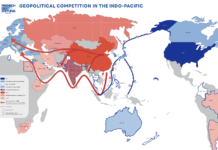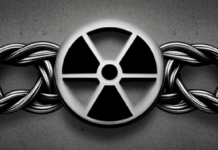Rabia Akhtar
India’s counterforce capabilities and deterrence equilibrium in South Asia is a subject which continues to agitate minds of strategic thinkers in the region and around the world. One thing is clear from the outset: that a nuclear-weapon state (read India) is in the process of acquiring counterforce capabilities is a reflection of its discomfiture with the deterrence equilibrium that is in place. India’s counterforce temptation as Narang and Clary refer to in their analysis on the subject has its roots in the ‘strategic paralysis’ India suffers and the only way to break out of this paralysis is to neutralize Pakistan’s nuclear capabilities, giving India a free hand at conventional war fighting without the fear of Pakistan’s threat of nuclear use.
Deterrence equilibrium is being put to test more than ever in South Asia today simply because efforts aimed at making deterrence fail are more than those aimed at strengthening deterrence. Pakistan is in a tough spot. It has an ideologically-motivated polity for a neighbor who is uncomfortable with the notions of mutual vulnerabilities and status quo antes. Thus, the logic of deterrence does not sit well with a fast-becoming rogue-state that India is transforming into.
What we have at our hands therefore is a Bernard Brodie flip. Brodie in 1946 proposed deterrence. The main purpose of nuclear weapons, he said, was war prevention and not war fighting. Today, the chief purpose of India’s acquisition of counterforce capabilities is to destroy Pakistan’s nuclear arsenal and take out its nuclear capabilities, thus destroying the deterrence equilibrium or parity which has been in place since the overt nuclearization of the region in 1998.
In 1957, Kissinger wrote in his classic Nuclear Weapons and Foreign Policy that, “after a certain point, superiority in destructive power no longer pays strategic returns.” So does Pakistan need to worry about Indian counterforce temptations? One the one hand, perhaps yes. When India behaves like the Soviet Union of the Cold War years, and believes in a ‘limited war’ under the nuclear umbrella to be winnable, then it is time for Pakistan to work towards neutralizing any strategic advantages India wants to accrue from its counterforce capabilities. And on the other hand, no. It is India’s turn to worry that sooner or later, Pakistan will catch up and once it does acquire counterforce capabilities, then what will be its implications for India.
We need to ask this question at the outset: Does technical parity always equal strategic parity? The answer is no. Technological developments do not operate in a vacuum. They are relative to the overall strategic situation. For now, the evolutionary or revolutionary implications of technology on deterrence in South Asia is too early to be deterministic. Pakistan must understand and take comfort in the fact that parity is a fleeting thing: there is no such thing as equilibrium in terms of technology-based capabilities.
India’s quest to buttress its counterforce capabilities cannot be dissociated from its doctrinal thinking, and by extension, from its thoughts on dealing with Pakistan. Since August 17, 1999, India has discredited its so-called No First Use (NFU) policy. India has practically told the world that in order to do away with a Pakistan-created strategic dilemma, India might draw first blood. It means that India will bring the threshold of nuclear-use down precipitously right down to the battlefield going forward.
If the logic of nuclear targeting is anything to go by, India’s first-use would be a foolhardy affair, given that Pakistan will have its entire arsenal intact to wreak havoc on India. Thus, New Delhi would have to go first and go big, something that will naturally compel its decision-makers to atone their nuclear forces in a manner that can make damage limitation a reality.
A doctrine-driven push towards a counterforce strategy is visible in the Indian strategic conclave. With a doctrine that accommodates nuclear compellence and challenges the very essence of deterrence, it is only a matter of time before India acquires the full-spectrum of capabilities that make counterforce a possibility, however distinct or dangerous it might be.
India’s journey towards adding more robust sets of counterforce options, as exemplified by the induction of more precise delivery vehicles, better surveillance and interception of the adversary’s (read Pakistan) strategic assets, and a more flexible nuclear command and control (NC2) structure, is denting deterrence equilibrium in an even-otherwise fraught strategic environment. Threat perception is a corollary of capabilities and intentions. With India openly threatening Pakistan with land-grabbing and other forms of saber-rattling, the intent is pretty clear. However, a bilateral deterrence equation has, to a great degree, attenuated India’s ability to use force to achieve political ends. Thus, weakening this two-way deterrence in a manner that raises its prospects of successfully compelling Pakistan, is one of India’s principal objectives. Deriding the potency of Pakistan’s riposte capacity and tinkering with the balance of vulnerabilities to elicit first-movers and first-strike advantages, are but some of the ways through which India could get out of its strategic paralysis.
Strategic stability is a function of deterrence stability and crisis stability and with counterforce capabilities in the mix, the overall strategic stability in South Asia will remain forever fragile. The question is: why would Pakistan, a smaller, weaker state not feel that , during a crisis, its behemoth adversary, armed with counterforce capabilities, will go for the kill? Inversely, why would India not be thrilled with the idea of taking out Pakistani nukes in a decapitation strike?
With counterforce options added to the mix, chances of inadvertent and accidental escalation increase manifold. The worry for South Asia watchers should therefore be how and why India’s accumulation of counterforce capabilities merits strategic reassessments within Pakistan. Would Pakistan’s nuclear-use thresholds, NC2 structures, and targeting strategies remain static in the face of India’s ameliorations? The answer, as any student of nuclear strategy would know, is a resounding no.
But is it all bad news? Not necessarily. It should be a tad comforting to note that, it is highly unlikely that India or Pakistan can destroy each other’s arsenals in a manner that leaves no room for nuclear retaliation. However, it is good news so as long as rationality does the talking. An Indian leadership that is infused with religious fundamentalism and superiority does not and should not be expected to believe in the rational model of decision-making. A BJP leadership that feels it can get away with carrying out an airstrike inside mainland Pakistan, can also be expected to miscalculate big time when it comes to using nuclear weapons. Even the mere thought that ‘we might get away with taking out dozens of Pakistani warheads’ is a miscalculation that will have consequences of the greatest magnitude. The allure of counterforce, dispossessing, and denying could pave the way for recklessness. And with RSS-BJP bend, that is perhaps the only thing that Pakistan needs to worry about for now.
A multitude of low-yield systems can certainly only be used against Pakistan. India is diversifying its options to target Pakistan, on the back of more numbers, precision, and lethality. Also, come to think of it, with all these heavy-ticket items in its armory, who stops India from using Pakistan as a convenient surrogate? With both countries holding onto different sides of the coercion spectrum, the equilibrium is disturbed..
Two questions are of import here for our readers. One, who would convince Pakistan that India’s counterforce forays are not aimed at it? Two, what would a state like Pakistan that exacts deterrence by holding Indian cities hostage to a countervalue strike do, when a state like India is seemingly reducing its ability to dish out a credible threat of a countervalue? These two questions, I believe, are at the heart of the ongoing disquisitions on India’s burgeoning counterforce capabilities.
With advances in technology assisting strategic decision-making, survivability of nuclear arsenal, for example hardening and concealment are already negated by technology-driven capabilities. Hardening is negated by accuracy of nuclear delivery systems and concealment is negated by revolution in remote sensing. Pakistan must get on with acquiring high end capabilities in AI and communication, its guidance systems, sensors, data processing to improve its deterrence vis-a-vis India.
Is there a silver lining in South Asia? Yes. Sit back and take comfort in the fact that if there is a technology out there, now or in the future, which is destabilizing, there will be a countermeasure soon developed for it. The worry, however, should be, what will happen when both sides have counterforce capabilities and aggressive nuclear doctrines? Can and will South Asia survive the Indian counterforce temptations?
Dr. Rabia Akhtar is Editor, Pakistan Politico. She tweets: @Rabs_AA
A version of this article was presented by the author in a webinar on “India’s Counterforce Capabilities and Options”, organized by the Strategic Vision Institute, on November 27, 2020.

















